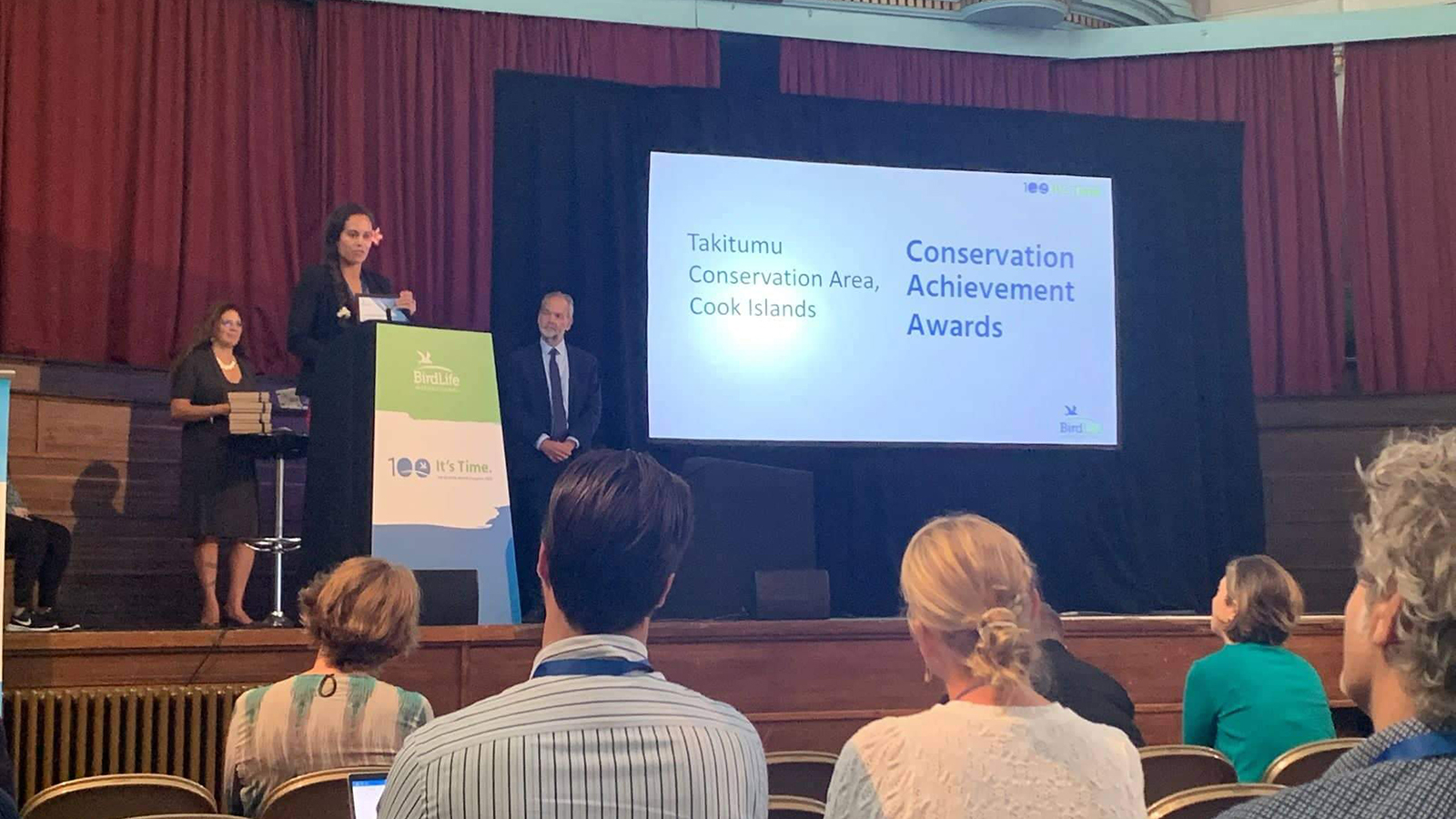Kākerōri revitalisation project wins major conservation award
Thursday 22 September 2022 | Written by Matthew Littlewood | Published in Environment, Local, National

Te Ipukarea Society conservation manager Alanna Smith accepts the award at the Birdlife International global congress in Cambridge, United Kingdom last week. Photo: Supplied/22092111
A project which has brought a native Cook Islands bird species back from the brink of extinction has won a major international conservation award.
The Takitumu Conservation Area, which has been a project for more than 30 years, has managed to see the revitalisation of the Kākerōri, which had fewer than 30 birds in the wild in the early 1990s and now has a population of more than 700 today.
The project has won a major award from international conservation group Birdlife International at its global congress in Cambridge, United Kingdom. The congress took place from September 11 to September 16.
Te Ipukarea Society conservation manager Alanna Smith, who was representing the project at the conference, said it was an award that honoured all the people that worked on the conservation area.
“It’s because of the work of people such as Ian Karika, Ed Saul, Hugh Robertson and the many, many volunteers that the bird has been able to survive and thrive,” Smith said.
“It’s 155 hectares of protective area, and every year, the birdlife population has continued to grow.”
Smith said the annual rat baiting has been a success story in itself.
“I reckon it’s one of the biggest success stories for conservation in the Pacific,” she said.
“Our partners in French Polynesia have got a monarch that they’re trying to bring back from the brink of extinction. If anything, they are looking to us for inspiration.”
Smith said the annual rat baiting, coupled with the surveys, helped create a strong base from which to assess and protect the birds.
“Getting more young people involved would be great. It would require finding opportunities to take them out into the field, and seeing how the bird lives in its own environment. That would be a start,” she said.
Smith said rats, feral cats and stray dogs were the biggest threats to the Kākerōri.
“If we target the rats, then we go a long way to addressing the problem. Rats are a major issue, they predate on the birds and destroy their nests. They can get up into the trees,” she said.
Smith said there were also plans to undertake a rat eradication programme on the uninhabited island of Takutea, near Atiu.
“We want to work really closely with the people of Atiu. There’s a good chance of a project like that being a success. It’s more possible to do rat eradication projects on uninhabited islands because the factor of dealing with people can become trickier. You have to do the consultations with people, you have to get them to understand what rules are in place,” Smith said.
“This is a project we want to see happen over the next two years. We want to get the school involved, getting them educated in predator control. If they can take ownership, then hopefully we can get a rat-free island.”
Smith said she learned a lot about various conservation programmes happening around the world at the Birdlife International Congress, including the launch of BirdLife’s ambitious new 10-year global strategy to address the nature and climate crisis threatening our world today.
“It can be quite hard working in the conservational realm, usually it seems all doom and gloom, so it was great to be at the conference and hear about the other projects around the world,” Smith said.
“It shows that there is so much more we can do.”




































